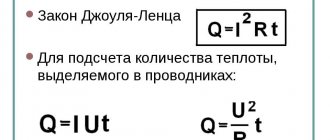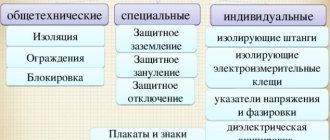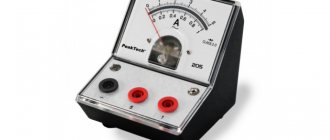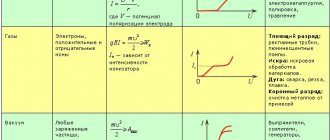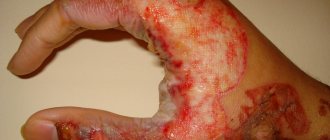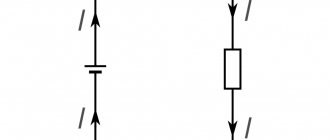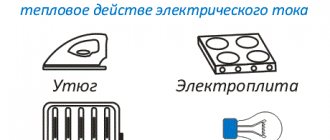First aid is a set of measures aimed at restoring or preserving the life and health of the victim. It should be provided by someone who is next to the victim (mutual aid) or by the victim himself (self-help) until a medical worker arrives. The life of the victim and, as a rule, the success of subsequent treatment depends on how skillfully and quickly first aid is provided. Therefore, everyone should know how to provide first aid and be able to provide it to the victim and themselves.
The sequence of actions when providing first aid to a victim:
- eliminating the impact of dangerous and harmful factors on the victim’s body (freeing him from the action of electric current, removing him from a contaminated atmosphere, extinguishing burning clothing, removing him from water, etc.);
- assessment of the victim’s condition;
- determining the nature of the injury that poses the greatest threat to the life of the victim, and the sequence of actions to save him;
- carrying out the necessary measures to save the victim in order of urgency (restoring the airway, performing artificial respiration, external cardiac massage, stopping bleeding, immobilizing the fracture site, applying a bandage, etc.);
- maintaining the victim’s basic vital functions until medical personnel arrive;
- calling an ambulance or a doctor or taking measures to transport the victim to the nearest medical facility.
Release from the action of electric current.
In case of electric shock, it is necessary to free the victim from the action of the current as quickly as possible, since the severity of the electrical injury depends on the duration of its effect on the body. You can turn off the electrical installation using a switch, knife switch or other disconnecting device, as well as by removing fuses, plug connections, creating an artificial short circuit on the overhead line (overhead line) by “throwing”, etc.
If it is not possible to quickly turn off the electrical installation, then measures must be taken to separate the victim from the live parts that he touches. In all cases, the person providing assistance should not touch the victim without taking proper precautions, as this is life-threatening. He must also ensure that he himself does not come into contact with a live part or live step while in the zone of spreading of the ground fault current.
At voltages up to 1000 V, to separate the victim from live parts or wires, use a rope, stick, board or some other dry object that does not conduct electric current. You can pull the victim away from live parts by clothing, while avoiding touching surrounding metal objects and parts of the victim’s body not covered by clothing. To isolate the hands, the person providing assistance, especially if he needs to touch the body of the victim who is not covered by clothing, must wear insulating gloves or wrap his hand in a scarf, put a cloth cap on it, pull the sleeve of a jacket or coat over his hand, throw a rubber carpet or rubberized material over the victim ( raincoat) or just dry cloth. You can also isolate yourself by standing on a rubber carpet, a dry board or some kind of non-electrically conductive bedding, a bundle of dry clothes, etc. When separating a victim from live parts, you should act with one hand.
If an electric current passes into the ground through the victim and he convulsively squeezes the current-carrying element in his hand, you can cut the wire with an ax with a dry wooden handle or make a break using a tool with insulating handles. It is necessary to cut the wires in phases, i.e. cut the wire of each phase separately.
At voltages above 1000 V, to separate the victim from live parts, it is necessary to use protective equipment: wear dielectric gloves and boots and use a rod or insulating pliers designed for the appropriate voltage. On 6-20 kV overhead lines, when it is impossible to quickly turn them off from the supply side, it is necessary to create an artificial short circuit to disconnect the overhead line. To do this, a flexible non-insulated conductor must be thrown onto the overhead line wires, which must have a sufficient cross-section to avoid burnout when a short circuit current passes through it. Before throwing a conductor, one end of it must be grounded (attached to the body of a metal support, a grounding descent or a separate ground electrode, etc.), and it is advisable to attach a load to the other end for ease of throwing. When throwing a conductor, you must use dielectric gloves and boots.
The person providing assistance must be aware of the danger of step voltage if the live part is lying on the ground. You need to move in this area with extreme caution, using protective equipment for insulation from the ground (dielectric galoshes, boots, carpets, insulating stands) or objects that do not conduct electricity well (dry boards, logs). Without protective equipment, you should move in the zone of spreading current from a ground fault by moving your feet on the ground and without lifting them from one another. After separating the victim from live parts, he should be taken out of this area at a distance of at least 8 m from the live part.
Damage factor
A person who touches live parts runs the risk of being exposed to strong voltage, which causes accidental muscle contraction. The victim will convulse, and at this moment his fingers will not be able to let go of the wire. A person completely loses control over his own body, and therefore, he cannot unclench his fingers on his own. There is no point in trying to reach someone.
The main method of freeing a victim from the effects of electric current is that you need to save your own life during rescue. You need to think before every action, otherwise you will also become a victim of tension. You should not run to a person, and especially you should not touch him.
First aid
Methods of providing first aid depend on the condition of the victim. The signs by which you can quickly determine the health status of the victim are as follows:
- consciousness: clear, absent, impaired (the victim is inhibited or excited);
- color of the skin and visible mucous membranes (lips, eyes): pink, bluish, pale;
- breathing: normal, absent, impaired (irregular, shallow, wheezing);
- pulse in the carotid arteries: well defined (rhythm correct or incorrect), poorly defined, absent;
- pupils: dilated, constricted;
With certain skills and self-control, the person providing assistance must assess the condition of the victim in a minute and decide in what volume and order assistance should be provided to him. If the victim is unconscious, it is necessary to monitor his breathing and, in case of breathing problems due to the recession of the tongue, move the lower jaw forward. To do this, with four fingers of both hands, grab the lower jaw from behind by the corners and, resting your thumbs on its edge below the corners of the mouth, pull it back and push it forward so that the lower teeth stand in front of the upper teeth. It should be maintained in this position until the tongue stops sinking. If the victim breathes very rarely and spasmodically, but his pulse is palpable, artificial respiration should be started immediately.
If the victim has no consciousness, pulse, breathing, the skin is bluish, and the pupils are dilated, you should immediately begin to restore the vital functions of the body by performing artificial respiration and external cardiac massage.
General and local electrical injuries
All electrical injuries are divided into local and general, and this division is very arbitrary. The first type includes: electroophthalmia, electrical burn or sign, metallization of the skin with particles of molten metal. Often, manifestations after exposure to electric current on the body appear later, and such electrical injuries, also called electric shock, cause a number of functional disorders, and exposure to electric currents can cause death.
The severity of an electric shock is influenced by several factors:
- Current strength.
- The duration of its impact.
- Environmental features (high humidity, etc.).
- The path of electric current.
- Type of current (alternating or direct).
It is noteworthy that the safest currents for the human body are: alternating current, with a force of no more than 1.5 A, and direct current, with a force of no more than 7 A. They can flow through the human body for a long time, even if the victim cannot free himself. In more serious cases, outside help will be required, because electrical injury from electric shock can be very serious.
Artificial respiration.
Artificial respiration is carried out in cases where the victim is not breathing or breathing very poorly (rarely, convulsively, as if with a sob), and also if his breathing is constantly deteriorating, regardless of what caused it: electric shock, poisoning, drowning, etc. The most effective method of artificial respiration is the “mouth to mouth” or “mouth to nose” method, since this ensures that a sufficient volume of air enters the victim’s lungs.
To carry out artificial respiration, the victim should be laid on his back, unbuttoned clothing that restricts breathing and ensure the patency of the upper respiratory tract, which in the supine position and in an unconscious state is closed by a sunken tongue. In addition, there may be foreign contents in the oral cavity (vomit, slipped dentures, sand, silt, grass, if the person was drowning), which must be removed with the index finger wrapped in a scarf (cloth) or bandage, turning the victim’s head to the side. After this, the person providing assistance is located on the side of the victim’s head, puts one hand under his neck, and with the palm of the other hand presses on the forehead, throwing his head back as much as possible. In this case, the root of the tongue rises and frees the entrance to the larynx, and the victim’s mouth opens. The person providing assistance leans towards the victim’s face, takes a deep breath with his open mouth, then completely tightly covers the victim’s open mouth with his lips and exhales vigorously, inhaling air into his mouth with some effort; at the same time, he covers the victim’s nose with his cheek or the fingers of his hand on the forehead. In this case, be sure to observe the victim’s chest, which should rise. In order for the exhalation to be deeper, you can gently press your hand on the chest to help the air leave the victim’s lungs.
External cardiac massage.
If there is not only breathing, but also a pulse in the carotid artery, artificial respiration alone is not enough to provide assistance, since oxygen from the lungs cannot be transferred by the blood to other organs and tissues. In this case, it is necessary to restore blood circulation artificially, for which external heart massage should be performed. The indication for resuscitation measures is cardiac arrest, which is characterized by a combination of the following signs: pallor or cyanosis of the skin, loss of consciousness, absence of a pulse in the carotid arteries, cessation of breathing or convulsive, irregular breaths. In case of cardiac arrest, without wasting a second, the victim must be laid on a flat, hard base: a bench, the floor, or, in extreme cases, a board placed under his back.
If one person is providing assistance, he is located on the side of the victim, and, bending down, gives quick energetic blows (using the “mouth to mouth” or “mouth to nose” method), then unbends, remaining on the same side of the victim, Place the palm of one hand on the lower half of the sternum, stepping back two fingers higher from its lower edge, and lift the fingers. He places the palm of his second hand on top of the first across or lengthwise and presses, helping by tilting his body. When applying pressure, your hands should be straightened at the elbow joints. The pressure should be applied in quick bursts so as to displace the sternum by 4-5 cm, the duration of pressure is no more than 0.5 s, the interval between individual pressures is no more than 0.5 s. During pauses, the hands are not removed from the sternum if assistance is provided by two people, the fingers remain raised, and the arms are fully straightened at the elbow joints.
If the revival is carried out by one person, then for every two deep injections he makes 15 pressures on the sternum, then again makes two injections and again repeats 15 pressures, etc. In a minute it is necessary to make at least 60 pressures and 12 blows, i.e. perform 72 manipulations, so the pace of resuscitation measures must be high. When two people participate in resuscitation, the “breathing-massage” ratio is 1:5, i.e. after one deep insufflation, five compressions are applied to the chest.
Conclusion
Current is a serious damaging factor that can kill a person in a short time. If you start saving the victim, you need to pay attention to yourself. There is no need to run headlong to save the victim from the current, as you yourself may die. You must be calm, keep a cool head, weigh every decision, but don’t hesitate. Break the circuit as quickly as possible and try to remove the affected wire from the affected wire using insulating gloves. Any actions must be thought out in advance. Provide the victim with first aid and wait for the doctors to arrive.
